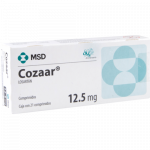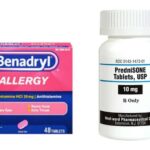What Is The Lowest Dose Of Prednisone You Can Take?

When one seeks medical attention, the first and foremost task handed to the physician is to assess the patient’s medical history and then prescribe an appropriate personalized medical regimen. Be it infectious diseases, chronic conditions, or metabolic disorders, prescription of medication is only the first step of proceedings. It is equally upon the patient, as much as it is upon the doctor and healthcare professionals examining him, to stick to his or her prescribed routine and get a follow-up check done on a regular basis.
The dose is the amount of drug taken at any one time. This can be expressed as the weight of the drug (e.g. 250 mg), the volume of drug solution (e.g. 10 mL, 2 drops), the number of dosage forms (e.g. 1 capsule, 1 suppository), or some other quantity (e.g. 2 puffs). The dosage regimen is the frequency at which the drug doses are given. Examples include 2.5 mL twice a day, one tablet three times a day, and one injection every four weeks.
The total daily dose is calculated from the dose and the number of times per day the dose is taken while the optimal dosage is the dosage that gives the desired effect with minimum side effects. There are many factors taken into consideration when deciding the dose of a drug including the age of the patient, weight, sex, ethnicity, liver and kidney function, and whether the patient smokes. Other medicines may also affect the drug dose. Adherence and compliance are pivotal in ensuring an improved health outcome for the patient especially if he is suffering from a chronic condition and needs prolonged medical attention.
What is prednisone?
Prednisone is used alone or with other medications to treat the symptoms of low corticosteroid levels (lack of certain substances that are usually produced by the body and are needed for normal body functioning). Prednisone is also used to treat other conditions in patients with normal corticosteroid levels. These conditions include certain types of arthritis; severe allergic reactions; multiple sclerosis (a disease in which the nerves do not function properly); lupus (a disease in which the body attacks many of its own organs); and certain conditions that affect the lungs, skin, eyes, kidneys blood, thyroid, stomach, and intestines. Prednisone is also sometimes used to treat the symptoms of certain types of cancer. Prednisone is also sometimes used with antibiotics to treat a certain type of pneumonia in patients with acquired immunodeficiency syndrome (AIDS). Talk to your doctor about the risks of using this drug for your condition.
Prednisone comes as an immediate-release tablet, a delayed-release tablet, and a liquid solution. You take all of these forms by mouth. Prednisone delayed-release tablet is available as a generic drug and as the brand-name drug Rayos. The immediate-release tablet is only available as a generic drug.
How prednisone works
Prednisone is in a class of medications called corticosteroids. It works to treat patients with low levels of corticosteroids by replacing steroids that are normally produced naturally by the body. It works to treat other conditions by reducing swelling and redness and by changing the way the immune system works. This action blocks chemicals that normally cause inflammation as part of your body’s immune response, and can help decrease inflammation in many parts of your body.
How should I take prednisone?
Prednisone comes as a tablet, delayed-release tablet, as a solution (liquid), and as a concentrated solution to take by mouth. Prednisone is usually taken with food one to four times a day or once every other day. Your doctor will probably tell you to take your dose(s) of prednisone at a certain time(s) of the day every day. Your personal dosing schedule will depend on your condition and on how you respond to treatment.
The typical dosage of prednisone can range from 5 mg to 60 mg by mouth per day. This depends on your condition and how bad it is. Your provider will raise or lower your dose based on how you respond and if you have any side effects.
Follow the directions on your prescription label carefully, and ask your doctor or pharmacist to explain any part you do not understand. Take prednisone exactly as directed. Do not take more or less of it or take it more often or for a longer period of time than prescribed by your doctor.
If you are taking the concentrated solution, use the specially marked dropper that comes with the medication to measure your dose. You may mix the concentrated solution with juice, other flavored liquids, or soft foods such as applesauce.
Swallow the delayed-release tablet whole; do not chew or crush it.
Your doctor may change your dose of prednisone often during your treatment to be sure that you are always taking the lowest dose that works for you. Your doctor may also need to change your dose if you experience unusual stress on your body such as surgery, illness, infection, or a severe asthma attack. Tell your doctor if your symptoms improve or get worse or if you get sick or have any changes in your health during your treatment.
If you are taking prednisone to treat a long-lasting disease, the medication may help control your condition but will not cure it. Continue to take prednisone even if you feel well. Do not stop taking prednisone without talking to your doctor. If you suddenly stop taking prednisone, your body may not have enough natural steroids to function normally. This may cause symptoms such as extreme tiredness, weakness, slowed movements, upset stomach, weight loss, changes in skin color, sores in the mouth, and a craving for salt. Call your doctor if you experience these or other unusual symptoms while you are taking decreasing doses of prednisone or after you stop taking the medication.
What is the lowest dose of prednisone you can take?
The lowest dose doctors prescribe for patients to take is less than 7.5 mg per day. Moderate dose ranges between 7.5 mg and 40 mg per day while high dose prednisone ranges from 40 mg to 60 mg per day.
Low-dose prednisone is indicated as a standard treatment in patients with rheumatoid arthritis. 10 mg daily or 5 mg prednisone twice daily will control most of the inflammatory symptoms of early polyarticular rheumatoid arthritis.
Doctors prescribe prednisone at the lowest effective dose for the shortest possible time. If prednisone is not effective, it should be stopped as soon as possible. The dose and time need to be adjusted for each patient based on the condition and response to treatment.
The reason that prednisone is used with care is that prednisone can pose serious side effects and long-term risks. In patients who need longer dosing of prednisone, it may be given every other day. This may reduce side effects and complications.
Prednisone side effects
Even a low dose can cause other side effects. The more common side effects that can occur with low dose prednisone include:
• acne
• confusion
• excitement
• headache
• nausea
• restlessness
• thinning skin
• trouble sleeping
• vomiting
If these effects are mild, they may go away within a few days or a couple of weeks. If they’re more severe or don’t go away, talk with your doctor or pharmacist.
Serious side effects
Call your doctor right away if you have serious side effects. Call 911 if your symptoms feel life-threatening or if you think you’re having a medical emergency. Serious side effects and their symptoms can include the following:
• Changes in emotions or moods, such as depression
• Changes in vision
• Eye pain
• Severe allergic reactions
• Infection. Symptoms can include:
o fever or chills
o cough
o sore throat
o trouble or pain in passing urine
• High blood sugar. Symptoms can include:
o increased thirst
o passing urine more often
o feeling sleepy or confused
o swelling of your ankles or feet
Prednisone may slow growth and development in children. Your child’s doctor will watch his or her growth carefully. Talk to your child’s doctor about the risks of giving prednisone to your child.
Prednisone may increase the risk that you will develop osteoporosis. Talk to your doctor about the risks of taking prednisone and about things that you can do to decrease the chance that you will develop osteoporosis.
Some patients who took prednisone or similar medications developed a type of cancer called Kaposi’s sarcoma. Talk to your doctor about the risks of taking prednisone.
Prednisone may cause other side effects. Call your doctor if you have any unusual problems while you are taking this medication.
If you experience a serious side effect, you or your doctor may send a report to the Food and Drug Administration’s (FDA) MedWatch Adverse Event Reporting program by phone (1-800-332-1088).





